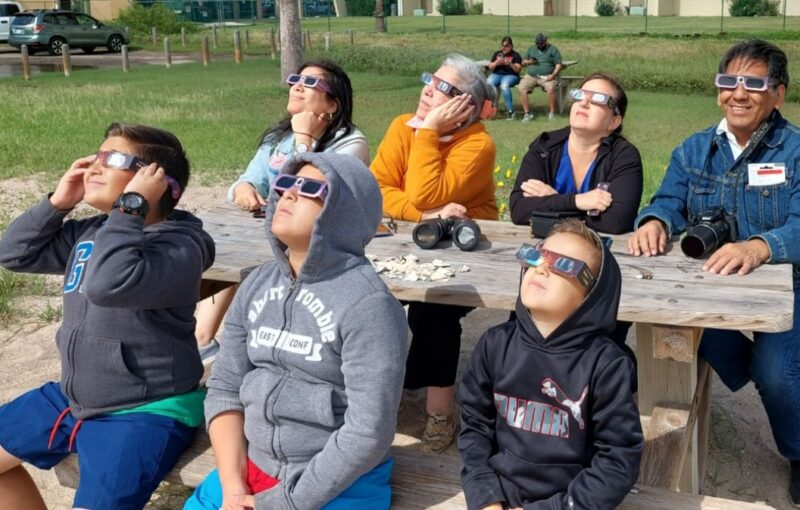
You learned long ago never to look directly at the sun. Gazing sunward without eye protection can permanently damage your eyes. But there are a variety of ways you can safely view the April 8, 2024, total solar eclipse. Plus – in case you’re on the wrong side of Earth for the eclipse, or if you’re clouded out, or if you just like having a livestream going while watching outside – you’ll find some useful links here.
Online viewing: Eclipse livestreams here
Online viewing isn’t as much fun as live viewing with your family, friends and neighbors. But, nowadays, many watching outside also enjoy a channel tuned to a livestream. And – if the April 8 eclipse takes place when you’re on the wrong part of the world to see it, or when it’s nighttime outside for you – you’ll enjoy watching online. Happy viewing!
Sky viewing: Do NOT use these techniques
First, let’s cover what you shouldn’t do to look at the sun. Whatever you do, never look at the sun directly without a safe filter in place to protect your eyes.
Besides your unprotected eyeballs, here are some other things you should not use: Do NOT use sunglasses, polaroid filters, smoked glass, exposed color film, X-ray film, or photographic neutral density filters.
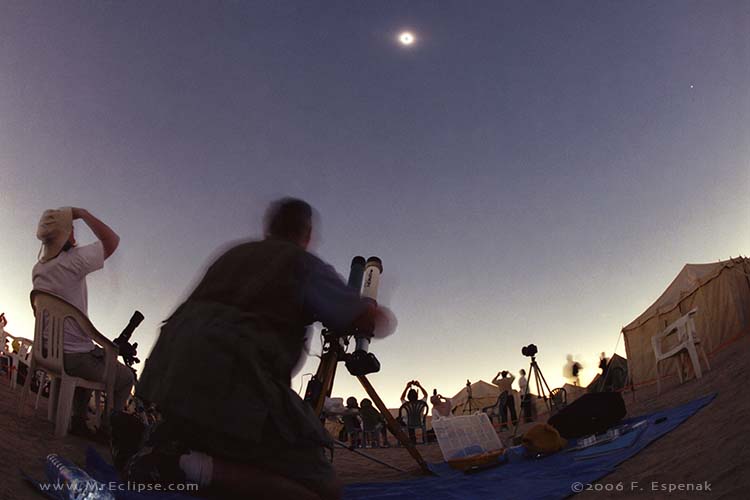
DO use these techniques for observing the sun safely
Safe commercial solar filters for a telescope. If you have a ‘scope, you’ll need a safe solar filter on the sky end of it in order to search for sunspots or watch a solar eclipse safely. Do not use a filter on the eyepiece end of your telescope. There’s too much to say about solar filters to include in this article, so we refer you to Fred Espenak’s article on safe solar filters. If you don’t have a ‘scope, you still have plenty of options, such as …
A home-rigged, indirect viewing method. We recommend this article by the masters of do-it-yourself science at the Exploratorium in San Francisco.
Creating a pinhole camera is another great option. It lets your family and friends get a good view of the sun, too. Here’s our video on how to make a DIY easy pinhole projector. With it, you can shine the sun’s image onto a flat surface and impress your friends and neighbors while giving everyone (including yourself) a cool experience.
Use handy things around the house. You can use a colander, a slotted spoon or even criss-cross your fingers and let the sun shine through them to see dozens of little eclipsed suns on the ground.
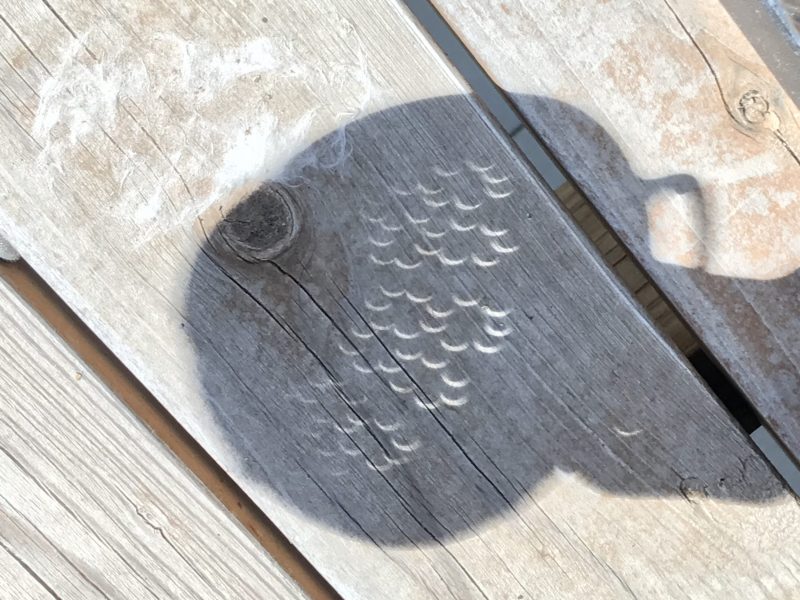
But don’t go yet. There’s more …
A commercial pinhole projector. There are several versions of this handy and unique device to safely project an image of the sun. The Sunspotter projects an enlarged image of the sun onto a piece of paper, and even shows all but the smallest sunspots. It’s easy to use, plus multiple people can safely watch the eclipse (or see sunspots) at the same time. Of course, for solar eclipses the advancing – and eventual retreating – of the moon’s shadow is easy to see and even photograph.
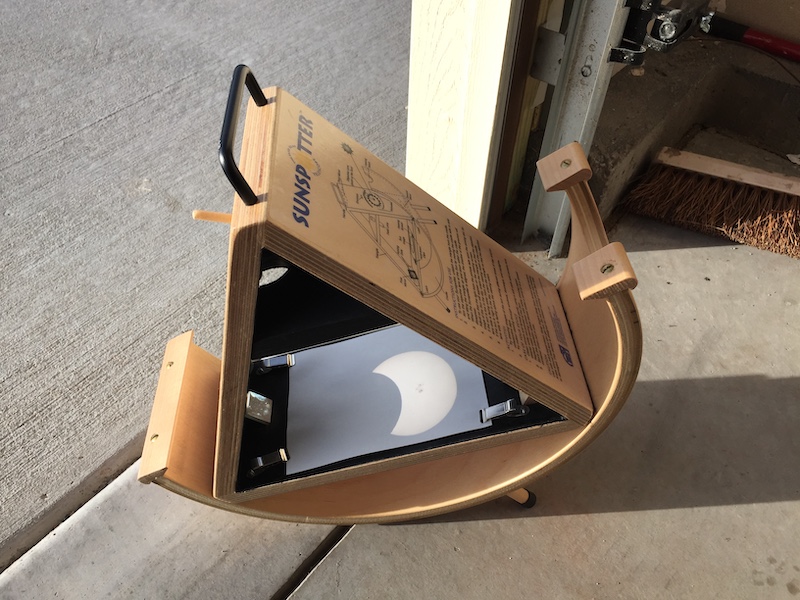
Commercial solar eclipse glasses. You might find these online or at a local nature center, or museum. Solar eclipse glasses are super easy to use, and they’re sort of cool-looking.
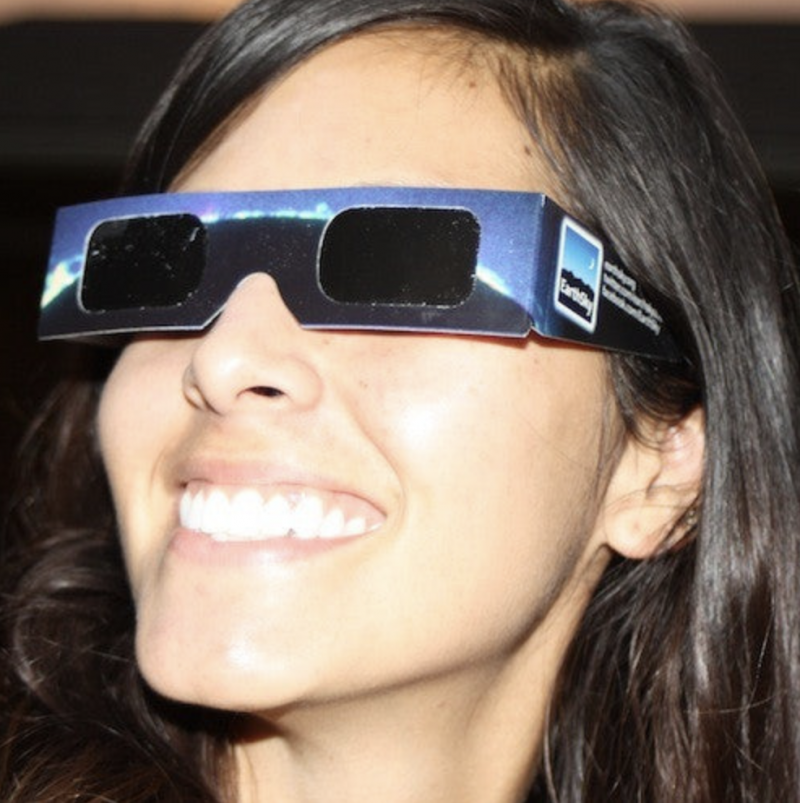
Local viewing at an astronomy club, park or nature center. We highly recommend this route for any kind of eclipse, any daytime solar viewing, or any nighttime astronomical event. If you watch among other amateur astronomers and casual sky gazers, you’ll have fun, learn about astronomy and get a great view of the objects and events going on in the sky. The NASA Night Sky Network has a list of local astronomy clubs in the U.S. Here’s a search page from Go-astronomy.com which includes worldwide clubs. And here are astronomy clubs and societies affiliated with the Astronomical League, one of the most established confederations of amateur astronomers in the U.S.
Bottom line: Some tips for observing the sun safely during a solar eclipse, plus more links, here.











